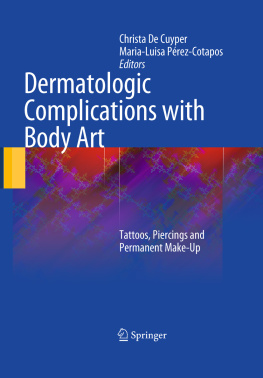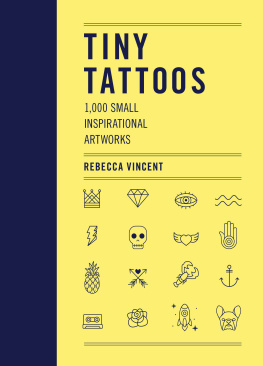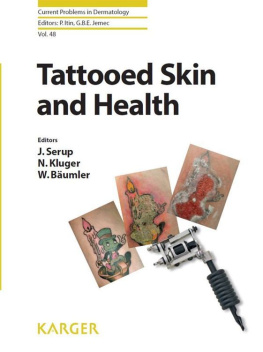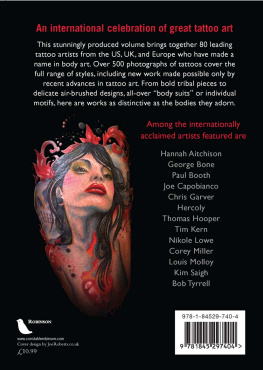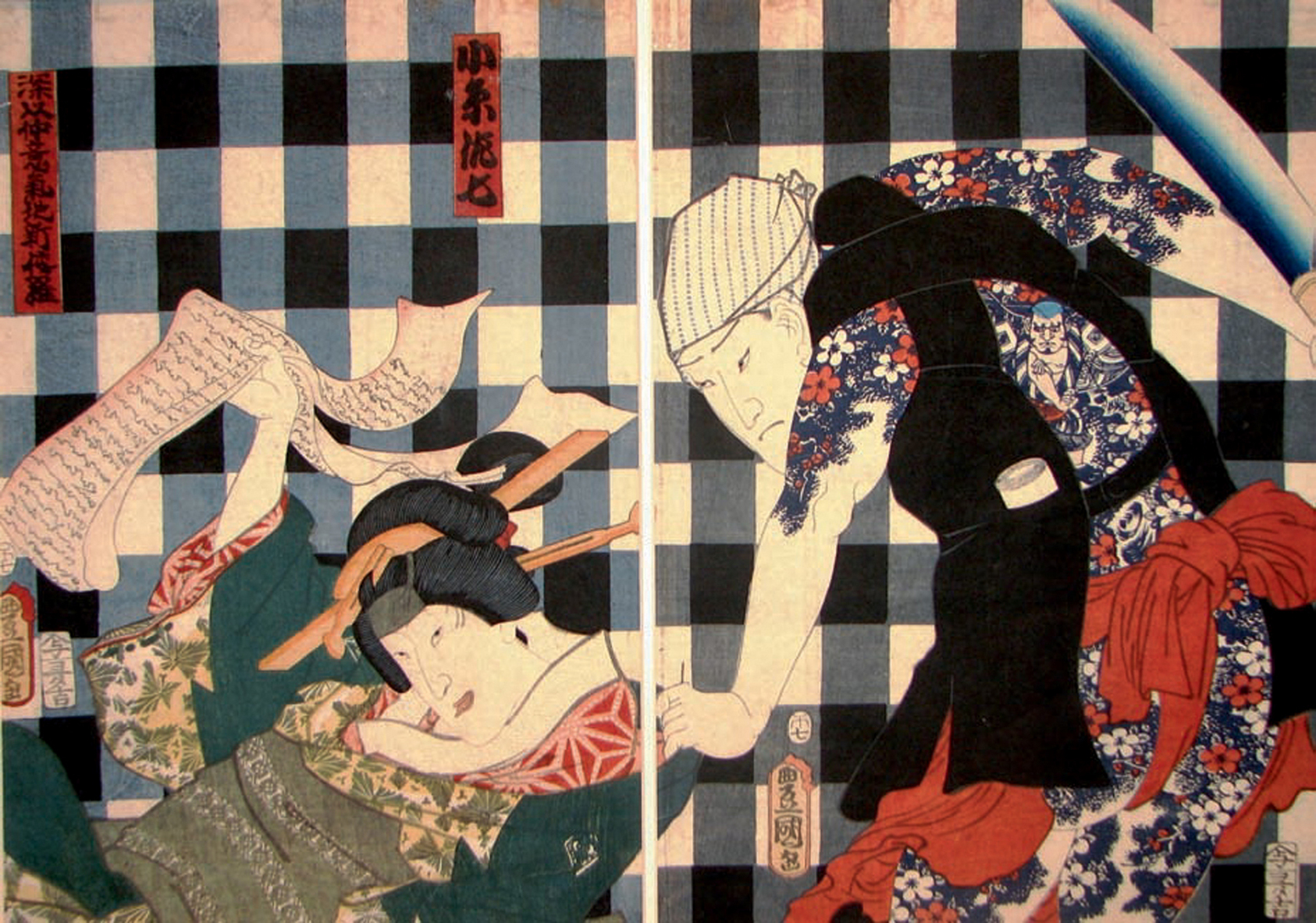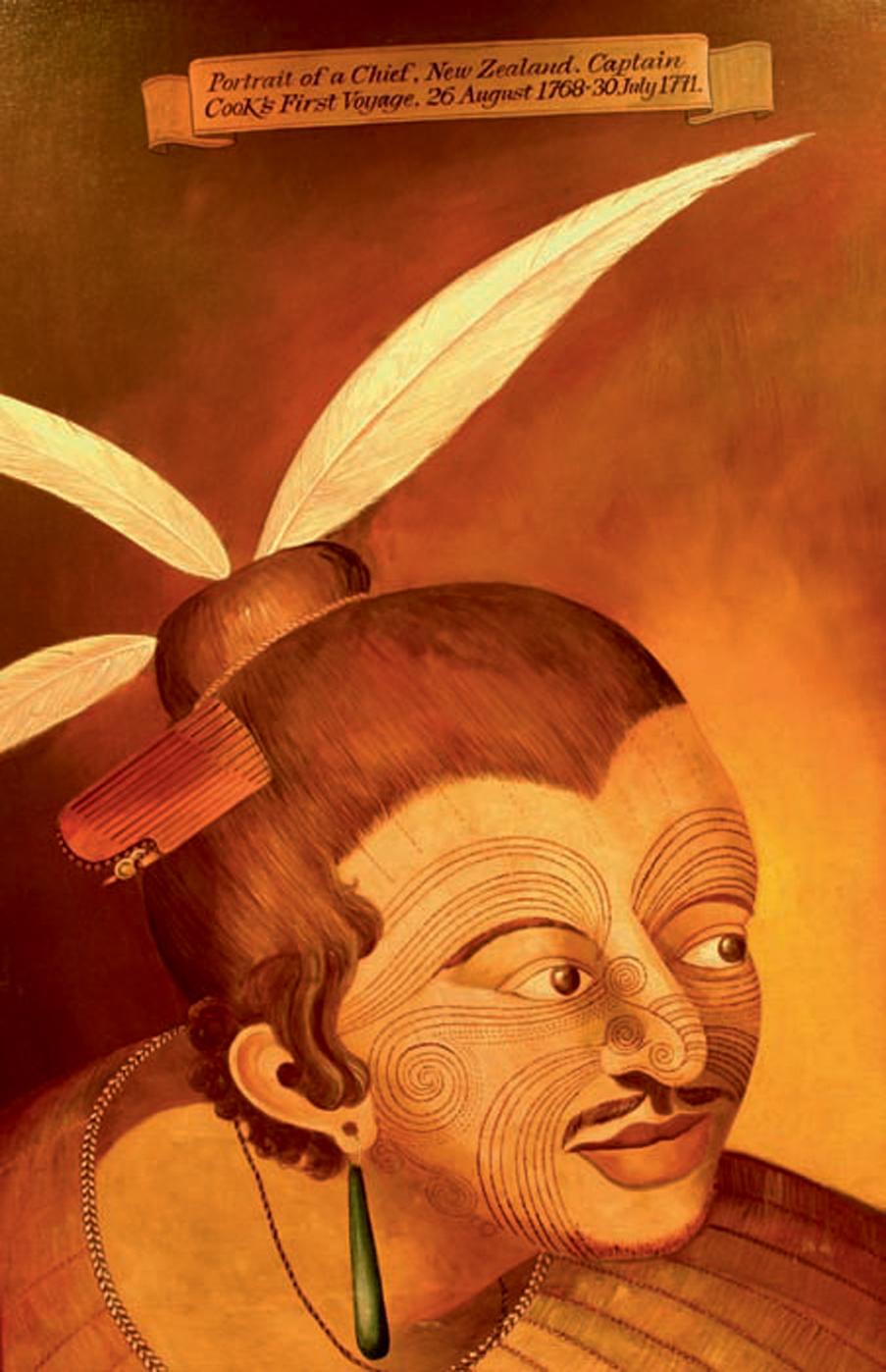1.1.1 Tattoos
Tattooing, defined as the practice of producing an indelible mark or figure on the human body by inserting pigment under the skin using needles or other sharp instruments, has probably been around since the beginning of humanity []. There is not so much a continuous history related to tattooing, but rather many concurrent happenings in different societies across the world. Tattoos disappear when their canvas goes; in other words, with the death of the individual, so our current information may be more discontinuous than the reality.
The famous 5,300-year-old preserved corpse, nicknamed Otzi, found in the mountains of the South Tyrol in 1991 was covered in tattoos. These included linear marks over many of his joints and a cross on the inside of the left knee. They may have been placed to help with pain from his evident arthritis [].
Dark blackish-blue inscriptions have been found on Egyptian mummies dating as far back as 2100 b.c. Interestingly, it appears that this practice of tattooing was limited to women. It may have been only for decoration, but other hypotheses suggest a ritualistic signifi-cance or a relationship to fertility and sexuality. The tattoos were groups of dots and dashes in geometric patterns, often across the abdomen. The oldest of these mummies is that of Amunet, a priestess of Hathor, the Egyptian goddess of love. Later (circa 15321070 b.c. ), female mummies from the New Kingdom of Nubia (South Egypt) were embellished with representational tattoos, for example, the image of the god Bes, on the thighs.
In the late eighth century b.c. , Isaiah prophesied This one will say, I am the Lord', another will call himself by the name of Jacob, and another will write on his hand, The Lord', and surname himself by the name of Israel [].
About the same period, the Pazyryk were a nomadic tribe living in the Altai Mountains of Siberia. A number of their tombs have been opened and previously undisturbed bodies found to be elaborately decorated with real and mythical beasts. These pictures are thought to reflect the societal status of the bearer [].
Likewise, it is clear that tattooing occurred in China. Although, in some parts men tattooed their hands as a sign of valor and women tattooed the nape of the neck as a sign of marital status, in general, tattooing happened among barbarian peoples. Tattoos may have been used as facial cosmetics, to ward off evils spirits, or as marks of slavery or punishment [].
In Japan, there is evidence from clay figures from the Jomon period (10,000300 b.c..) of facial tattoos, and later, during the Yahoi period (300 b.c..300 a.d. ) tattooing occurred on the face for decorative and religious purposes and to ward off evil spirits. Later, tattooing fell into disrepute, and during the Kofun period (300600 a.d .), it was used as a punishment and to identify untouchables. Decorative tattooing, heavily influenced by the imagery of wood-block print artists, developed during the Edo period (16001800 a.d. ). The Yakuza, who initially were flamboyant and crazy samurai in the service of the emperor, degenerated into the criminal class, and it was this group who became known for elaborate full body tattoos. (Fig. ].
Fig. 1.1
Nakamura Fukusuke in the role of Koito with Ichimura Ichizo in role of Sashichi. Color woodcut diptych with gauffrage 1858, 7th month. From the play Fuka unbaka ikiji shinwara . Signed: Toyokuni ga in a Toshidama cartouche. Artist: Utagawa Kunisada (17861865). Publisher: Otaya Takishi
Little is known about tattooing during the latter part of the first millennium and the early part of the second millennium a.d ., but the Inuit (Eskimos), who lived along the Arctic coasts of Siberia, Alaska, Greenland, and Canada, continued to use facial tattoos over the centuries. They served to protect them from enemies, showed the women could bear pain and were ready for marriage. Traditionally, older women did the tattooing using an unusual method of bone needles blackened with soot, which were threaded through the skin so that the black particles remained embedded in the tracks []. Symbols were formed mainly using lines, dots, and geometric designs.
Western interest in tattooing reappeared during the second half of the eighteenth century.
Captain Cook, a British explorer, and his crew were fascinated by the tattooing they saw on the South Sea Island of Tahiti, the Moko they encountered among the aborigines of New Zealand (Fig. ), and the skin pictures on the inhabitants of Hawaii. The word tattoo came from the Tahitian word tatau, meaning the results of tapping, and it signified the noise made by the mallet when it hit needles made from sharp-toothed bones driven into the flesh. Tattoos among the Marque-san people were used to distinguish rank and age among men. Tattooing started in the teen years and for men continued throughout their lives to cover the whole body, while women' tattoos were typically only on the face, lips, ears, feet, and hands. Tattooed individuals, including the famous Omai who was displayed as a human oddity, were brought back on ships to Europe, causing considerable sensation. In turn, the seamen learned the Polynesian tattooing techniques and produced their own designs. A French man, Jean Baptiste Capri, was tattooed on the Marquesas after he had deserted a whaling expedition, and in 1804 he displayed himself in Russia as the first European tattooed attraction, thereby paving the way for many other sideshow human oddities. Traditional tattooing died related to the arrival of protestant missionaries, despite the stories of the English missionary, John Williams, using the local skill to have the word murderer tattooed across the upper lip of a woman who had murdered her husband.
Fig. 1.2
Facial Moko. Photographer: Walter Brooks (with permission)
By 1846, there was sufficient demand among soldiers and sailors and from others who wanted to make livings as tattooed masterpieces, for Martin Hilde-brandt to open a tattoo shop in New York City. This was followed in 1891 by the development of an electric tattoo machine by Professor Samuel O'Reilly and in 1904 by an updated machine with electromagnetic coils set transversely to the tube assembly. Both were based on Thomas Edison' recently patented electric pens. The design was updated again in 1929 by Percy Waters, a Detroit tattooist, and, with minor mod-ifications, this is the machine that is in general use today. Although still painful, the rapidity of the multiple needle pricks needed to make an elegant tattoo has made the process more bearable, and allowed for the popular spread of the technique. Between the two World Wars, tattoos became so mainstream among working class and military men that Norman Rockwell' illustration of The Tattooist was on the cover of the middle class magazine, the Saturday Evening Post []. Soon after this, a tattoo on the back of the left hand was used in highly successful advertisements disseminated across the United States to sell cigarettes.

